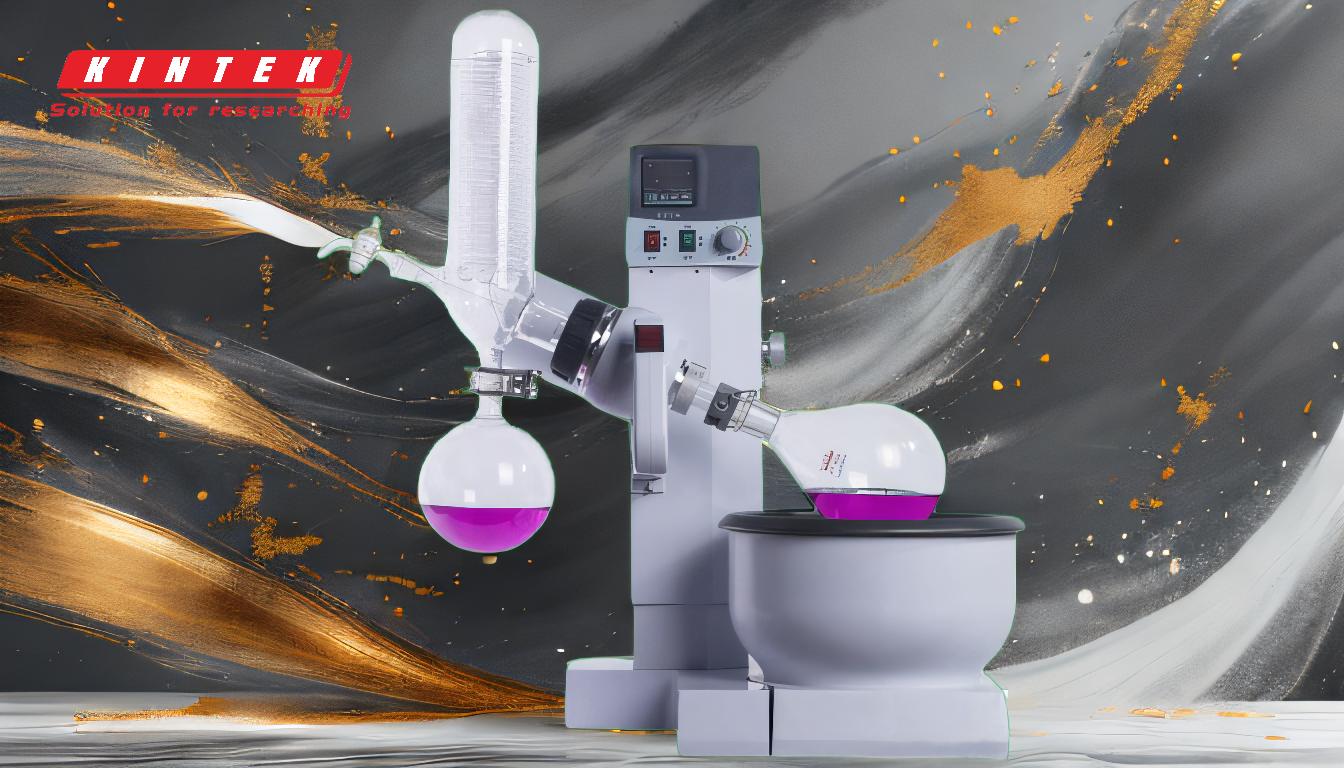Rotary evaporation is a technique primarily used to separate low-boiling solvents from compounds that are solid at room temperature and pressure. The most commonly used solvents in rotary evaporation include n-hexane and ethyl acetate, which are classified as low-boiling solvents. However, rotary evaporators can also handle high-boiling solvents like water, dimethylformamide, and dimethyl sulfoxide, provided the vacuum system can achieve sufficiently low pressure. High-boiling solvents are less commonly used due to their tendency to cause "bumping" during evaporation. The choice of solvent depends on the specific application, the boiling point of the solvent, and the capabilities of the rotary evaporator.
Key Points Explained:

-
Primary Use of Rotary Evaporation:
- Rotary evaporation is mainly used to separate solvents from compounds that are solid at room temperature and pressure. This process is particularly effective for isolating and concentrating non-volatile compounds.
-
Common Low-Boiling Solvents:
- The most frequently used solvents in rotary evaporation are low-boiling solvents, such as:
- n-Hexane: A hydrocarbon solvent with a low boiling point, commonly used in organic chemistry.
- Ethyl Acetate: An ester with a relatively low boiling point, often used in extractions and as a solvent in various chemical reactions.
- The most frequently used solvents in rotary evaporation are low-boiling solvents, such as:
-
High-Boiling Solvents:
- Rotary evaporators can also handle high-boiling solvents, such as:
- Water: Although water has a high boiling point, it can be evaporated using a rotary evaporator if the vacuum system can achieve very low pressures.
- Dimethylformamide (DMF): A polar aprotic solvent with a high boiling point, used in organic synthesis.
- Dimethyl Sulfoxide (DMSO): Another high-boiling solvent, often used in chemical reactions and as a cryoprotectant.
- High-boiling solvents are less commonly used due to the risk of "bumping," where the solvent can violently boil and potentially damage the equipment.
- Rotary evaporators can also handle high-boiling solvents, such as:
-
Factors Influencing Solvent Choice:
- Boiling Point: The boiling point of the solvent is a critical factor. Low-boiling solvents are preferred because they evaporate more easily under reduced pressure.
- Vacuum System Capability: The ability of the rotary evaporator to achieve and maintain low pressure is essential, especially when dealing with high-boiling solvents.
- Application Requirements: The specific requirements of the application, such as the need to isolate a particular compound or the nature of the material being processed, also influence the choice of solvent.
-
Practical Considerations:
- Safety: When using low-boiling solvents, it is important to ensure proper ventilation and avoid exposure to potentially harmful vapors.
- Equipment Maintenance: Regular maintenance of the rotary evaporator, including the vacuum pump and seals, is necessary to ensure efficient operation and prevent leaks.
- Solvent Recovery: In many cases, solvents can be recovered and reused, which is both cost-effective and environmentally friendly.
By understanding these key points, a purchaser of equipment or consumables can make informed decisions about the solvents and equipment needed for rotary evaporation processes. The choice of solvent will depend on the specific requirements of the application, the boiling point of the solvent, and the capabilities of the rotary evaporator.
Summary Table:
| Solvent Type | Examples | Key Characteristics |
|---|---|---|
| Low-Boiling Solvents | n-Hexane, Ethyl Acetate | Low boiling points, easy evaporation under reduced pressure, commonly used in organic chemistry. |
| High-Boiling Solvents | Water, DMF, DMSO | High boiling points, require strong vacuum systems, risk of "bumping" during evaporation. |
| Factors to Consider | Boiling Point, Vacuum System, Application | Choose solvents based on boiling point, vacuum system capability, and specific application needs. |
Need help selecting the right solvent for your rotary evaporation process? Contact our experts today for personalized advice!










